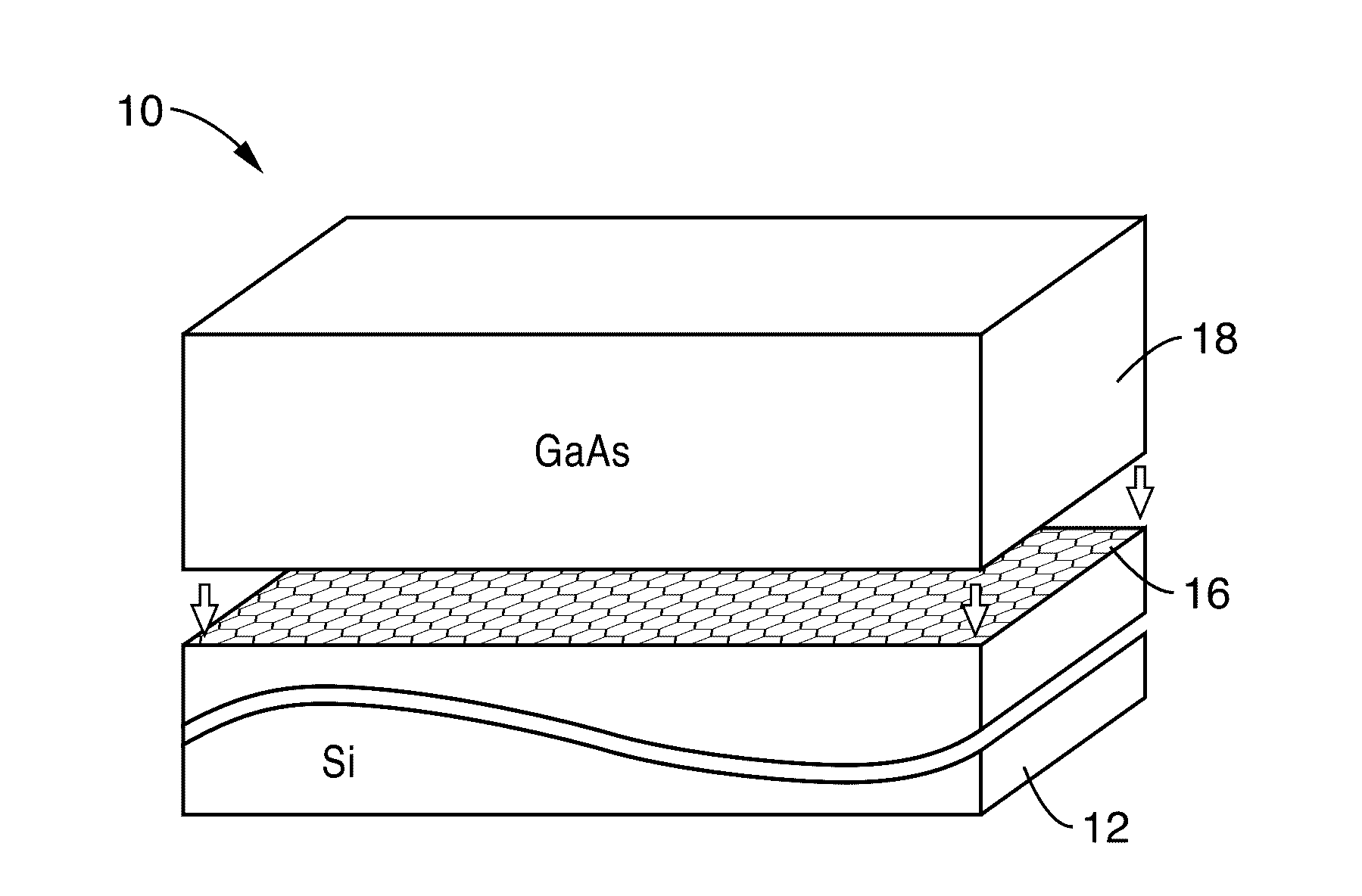Epitaxial growth of gallium arsenide on silicon using a graphene buffer layer
a technology of graphene buffer layer and gallium arsenide, which is applied in the direction of basic electric elements, electrical equipment, semiconductor devices, etc., can solve the problems of thermal expansion mismatch, lattice mismatch, thermal expansion mismatch, and dissimilar chemical bonding, and achieve the heteroepitaxial growth of gaas/si. the effect of increasing the number of peaks
- Summary
- Abstract
- Description
- Claims
- Application Information
AI Technical Summary
Benefits of technology
Problems solved by technology
Method used
Image
Examples
Embodiment Construction
1. Introduction
[0027]Van der Waals epitaxy (vdWE) has been proven to be a useful route to heteroepitaxy. Utilizing vdWE, depositing a material with three-dimensional (3D) bonding on a two-dimensional (2D) layered van-der-Waals material could be a new and interesting approach of heteroepitaxy. The bonds between the 2D material / upper 3D epilayer in this approach are about two orders of magnitude weaker in comparison to the covalent bonds between the 3D substrate / 3D deposited layer. Therefore, the weak bonds between 2D / 3D could accommodate thermal mismatch with different substrate temperatures during the growth. Furthermore, the strain due to the in-plane lattice-mismatch with the epitaxially-grown 3D overlayers is mitigated in quasi-van der Waals Epitaxy (QvdWE) due to low growth-axis bond energies. Considering further, the dislocations at the interface are not expected to propagate through the grown material due to the weak interactions at 2D / 3D heterointerface. Only the topmost laye...
PUM
 Login to View More
Login to View More Abstract
Description
Claims
Application Information
 Login to View More
Login to View More - R&D
- Intellectual Property
- Life Sciences
- Materials
- Tech Scout
- Unparalleled Data Quality
- Higher Quality Content
- 60% Fewer Hallucinations
Browse by: Latest US Patents, China's latest patents, Technical Efficacy Thesaurus, Application Domain, Technology Topic, Popular Technical Reports.
© 2025 PatSnap. All rights reserved.Legal|Privacy policy|Modern Slavery Act Transparency Statement|Sitemap|About US| Contact US: help@patsnap.com



